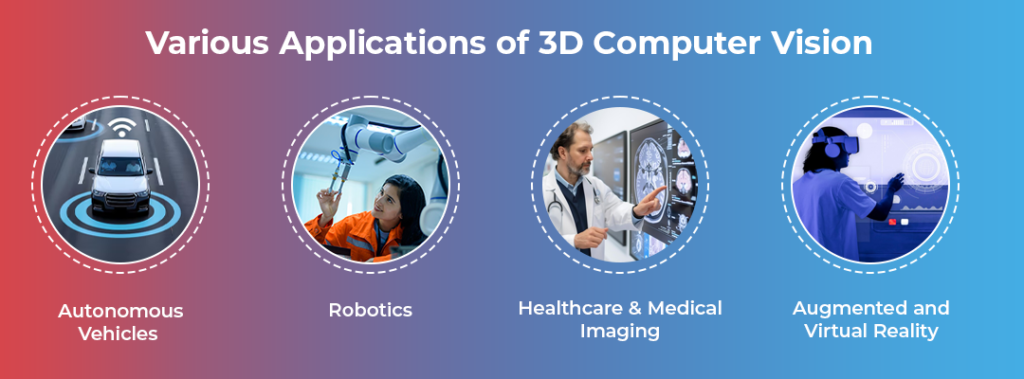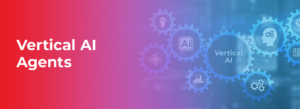Tapping into the Future: A Birds Eye-View to 3D Computer Vision
In today’s day and age, we are all living in a constantly evolving landscape of artificial intelligence (AI) and machine learning. And one transformative technology that is certainly the cornerstone of this era is 3D computer vision. This advanced technology is reshaping industries by enabling machines to perceive, interpret, and understand the physical world in three dimensions. From self-driving cars to augmented reality, 3D computer vision lies at the very heart of some of the most exciting and pioneering innovations in modern technology.
An Overview of What is 3D Computer Vision?
3D computer vision is, per se, an integral subfield of computer vision that equips machines with the potential to see the depth and spatial relations of a scene. However, on the other hand, it is important to note that the classic 2D computer vision approaches analyze images as 2D space through the edge, texture, and colour extraction. While it performs well for most applications, it fails when it comes to understanding the depth, volume, and overall geometry of an object.
Therefore, this is exactly where the inclusion of a third dimension comes into play. 3D computer vision enables machines to interpret the world in a manner that is almost akin to human vision. This is essentially achieved using an array of robust techniques such as stereo vision, Light Detection and Ranging (LiDAR), structured light, and time-of-flight cameras. These technologies primarily capture the geometry of objects. This means that these technologies facilitate the machines to map the exact depth and distances between objects, identify various shapes, and also undertake complex spatial analysis.
Various Applications of 3D Computer Vision

The potential applications of 3D computer vision are eclectic, to say the very least. These applications are prevalent across an array of industries. However, some of the most prominent use cases are succinctly highlighted below :
1. Autonomous Vehicles:
One of the most prominent and widely used applications of 3D computer vision is the creation of self-driving and autonomous vehicles. Self-driving cars heavily rely on advanced sensors and 3D vision systems. This helps the vehicle navigate through various complex environments while recognizing all sorts of obstacles, thereby making on-the-go, real-time decisions. These systems enable vehicles to perceive the distance between objects, detect pedestrians, and understand the structure of the road which are essential for safe and effective autonomous driving.
2. Robotics
Well, 3D computer vision technology is the very pulse of robotics, especially in today’s times. This technology is essentially used to augment the overall ability of machines to seamlessly interact with the environment. So by offering depth perception to robots, the 3d vision technology helps them to smoothly manipulate objects with to a tee precision, navigate through dynamic environments, and perform an array of tasks such as assembly, packaging, and inspection. This is particularly crucial in industries such as manufacturing and logistics wherein automation now holds one of the most cardinal roles.
3. Healthcare and Medical Imaging:
To offer better insights into the human body, advanced computer vision technologies are being used in 3D ultrasound and MRI. These robust technologies have completely changed how medical imaging is done in the healthcare space. This, in turn, signifies that doctors can now get a lot more accurate and precise diagnoses. They can accordingly plan better and more effective treatment strategies. This is equally applicable for surgeons who are rampantly making use of the 3D vision systems to carry out minimally invasive procedures and that too with an unprecedented level of accuracy, thus improving the overall success rate.
4. Augmented and Virtual Reality
Augmented reality (AR) and virtual reality (VR) technologies are heavily reliant upon 3D computer vision technology. This, per se, is the keystone that helps provide the immersive experiences that AR and VR are essentially known for. So by capturing and interpreting the physical world in three dimensions, AR and VR systems truly help enrich the digital content. These technologies enable users to interact with virtual objects most realistically by offering a seamless and intuitive experience. As an example of how this technology is changing different sectors. It is pertinent to note that it is being utilized in the gaming and entertainment industry and well, it goes all the way to education and retail.
The Hurdles Encountered & the Future of 3D Computer Vision
Well, there’s no denying the fact that 3D computer vision technology holds tremendous potential. However, having that said, it also comes with its own set of challenges that we cannot afford to overlook. Capturing accurate depth information in real-time is computationally intensive, to say the very least and it is somewhat a herculean task. This requires advanced hardware and sophisticated algorithms. Additionally, it can be somewhat of a daunting task and a technical hurdle to ensure thorough robustness in dynamic environments with varying lighting conditions and occlusions.
However, we also can’t overlook the rampant advancements in AI which is taking the world by storm. Deep learning and sensor technology have, therefore, cropped up and are rapidly overcoming these obstacles. So we can say for now that the future of 3D computer vision promises even greater precision, efficiency, and versatility. This technology is certainly going to open new doors to innovations across industries.
How Can We at Macgence Help Your Business with 3D Computer Vision Technology?
Well, we don’t like blowing our own trumpet and we let our work speak for itself. However, we would like to mention that we specialize in offering cutting-edge AI solutions, including 3D computer vision technology. We assist businesses and help them not just thrive but scale in today’s fast-paced digital era. Our team of experts develops customized 3D vision systems that are specifically tailored to meet the distinct needs of your particular industry, whether it’s autonomous vehicles, robotics, or even healthcare.
So look no further and tap into the unimaginable potential of 3D computer vision with us at Macgence. Partner with us today and we’ll help you innovate and drive your business forward. Contact us for a free one-on-one consultation and we’ll be happy to assist you.
You Might Like
February 28, 2025
Project EKA – Driving the Future of AI in India
Artificial Intelligence (AI) has long been heralded as the driving force behind global technological revolutions. But what happens when AI isn’t tailored to the needs of its diverse users? Project EKA is answering that question in India. This groundbreaking initiative aims to redefine the AI landscape, bridging the gap between India’s cultural, linguistic, and socio-economic […]
March 7, 2025
What is Data Annotation? And How Can It Help Build Better AI?
Introduction In the world of digitalised artificial intelligence (AI) and machine learning (ML), data is the core base of innovation. However, raw data alone is not sufficient to train accurate AI models. That’s why data annotation comes forward to resolve this. It is a fundamental process that helps machines to understand and interpret real-world data. […]
March 6, 2025
Vertical AI Agents: Redefining Business Efficiency and Innovation
The pace of industry activity is being altered by the evolution of AI technology. Its most recent advancement represents yet another level in Vertical AI systems. This is a cross discipline form of AI strategy that aims to improve automation in decision making and task optimization by heuristically solving all encompassing problems within a domain. […]
March 5, 2025
Use of Insurance Data Annotation Services for AI/ML Models
The integration of artificial intelligence (AI) and machine learning (ML) is rapidly transforming the insurance industry. In order to build reliable AI/ML models, however, thorough data annotation is necessary. Insurance data annotation is a key step in enabling automated systems to read complex insurance documents, identify fraud, and optimize claim processing. If you are an […]





